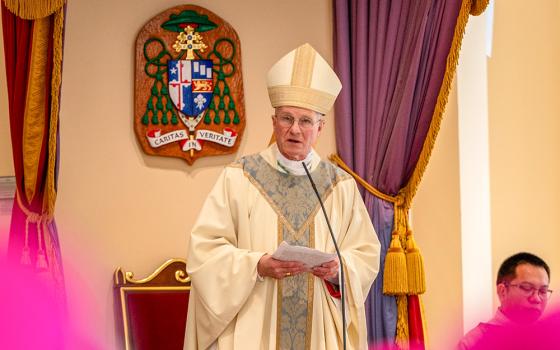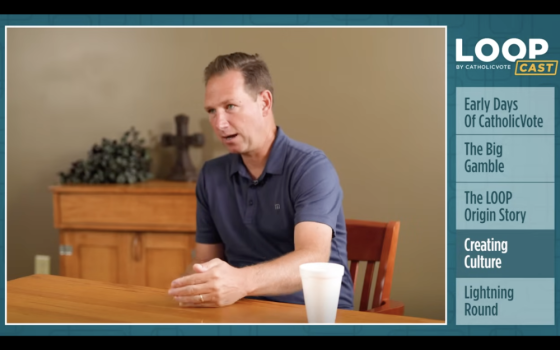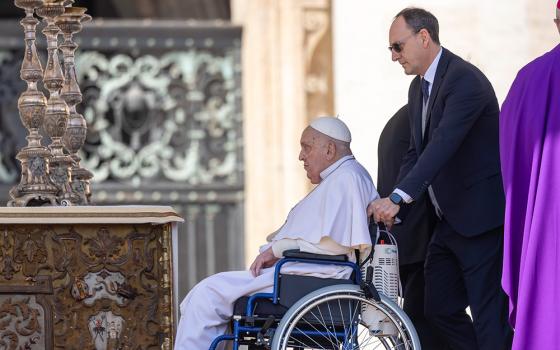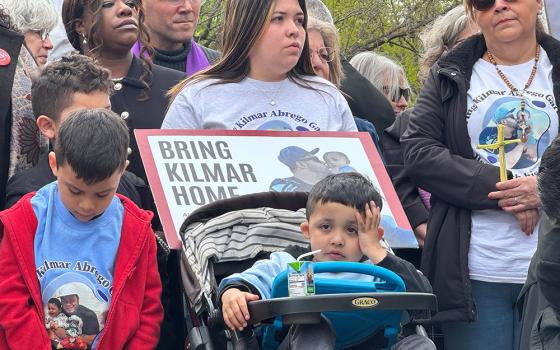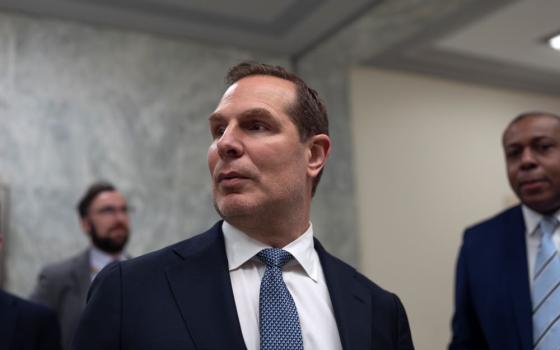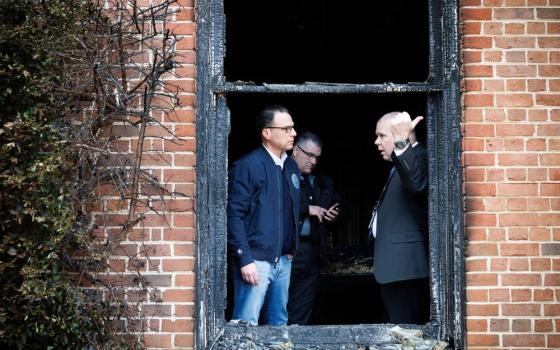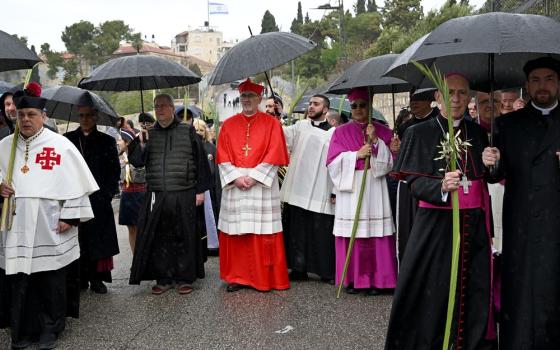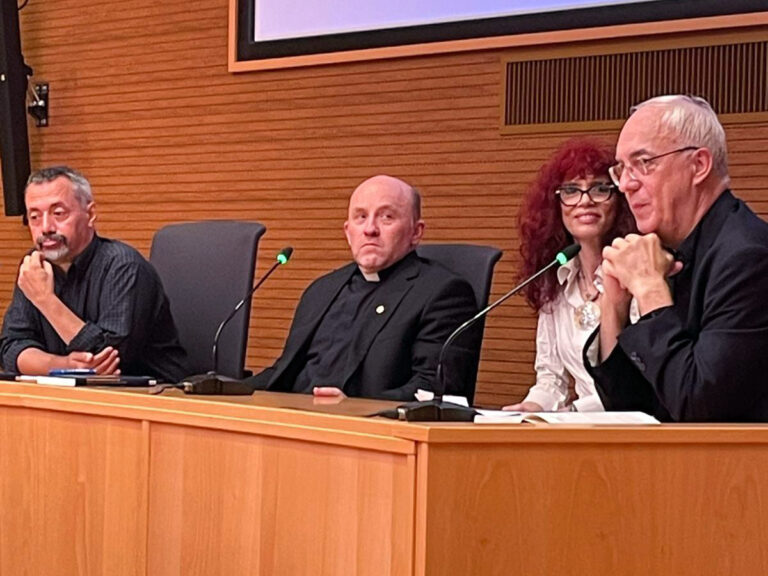
Fabio Scardigli, from left, the Rev. Gabriele Gionti, Ines Testoni and the Rev. Andrea Toniolo present essays about religion and science working together at the General Curia of the Jesuit Society in Rome, Friday, Sept. 6, 2024. (Courtesy Ines Testoni press office)
In a mostly empty room in the main hall of the General Curia of the Jesuit Society, a stone’s throw from the Vatican, theologians and physicists met Friday (Sept. 6) to make a case for why religion and science should come together to answer humanity’s biggest questions on time, eternity and the meaning of life.
The group gathered to present a book of essays titled "Eternity Between Space and Time: From Consciousness to the Cosmos," by leading theologians such as Kurt Appel and the Rev. Andrea Toniolo; luminary physicists, including Nobel Prize winners Roger Penrose and Gerard ’t Hooft; the founding father of string theory, Gabriele Veneziano; and Federico Faggin, who created the first microprocessor.
The idea of putting together a cross-disciplinary reflection on space and time was hatched at a conference on eternity at Italy’s prestigious University of Padua in May 2022. The lively discussions, part of a program on "death studies and End of Life," inspired a collaboration aimed at tying together seemingly disparate fields of human knowledge to find common truths and challenges.
Bringing the widely diverse disciplines together was no easy task, according to the Rev. Gabriele Gionti, vice president of the Vatican Observatory, who is one of the editors of the book. "The field of physics and the field of theology are two parallel planes that never touch," he told the handful of attendees at the event.
With most of the Vatican absorbed with the pope’s historic two-week visit to Southeast Asia, a conference of Vatican physicists and theologians talking about ties between faith and science was easily overlooked. But Gionti said that even at the best of times, such cross-disciplinary academic efforts suffer from a general lack of interest, especially in Europe. Although, he said, "in English-speaking environments, especially among Protestants and non-Catholics, it happens much more frequently."
Advertisement
To facilitate the dialogue between theology and science, organizers of Friday’s event restricted the discussions to topics that could translate to all the areas of study: conscience, time and eternity. Speakers at the event commented on how the scientific community, like the rest of society, seems to have dismissed the field of theology with the by-now-familiar proclamation that "God is dead." But those addressing the conference challenged their colleagues to think again.
"One can’t ignore a knowledge that guided the world, and science, until the end of the 19th century," said Ines Testoni, who leads the end-of-life studies program at the University of Padua. "We decided to resurrect God as a category that must be reckoned with," she added.
Toniolo suggested that Catholic theology must adapt its framework to keep up with the challenges posed by modern physics. He argued in his address to the conference that as Christianity becomes an increasingly pluralistic reality, with more than 70% of Christians living outside of the West, its theological understanding of time and eternity might change as it absorbs different cultural perspectives.The book includes reflections on what happened before the Big Bang and the unresolved mysteries of quantum physics. In his contribution, Faggin attempts to build a physical theory around a personal spiritual experience. The development of artificial intelligence and the questions it raises about human consciousness are also addressed in the book."Human consciousness fuels attempts to recreate it through an algorithm or rules," said physicist Fabio Scardigli. "It’s possible that if we insist (on going) down that road we will likely never arrive at the creation of a conscious machine."
The Vatican Observatory, founded by the Catholic Church in 1891 to promote the study of space and physics, is organizing a future event with high-profile physicists and philosophers to continue its quest for a cross-sector understanding of human life.
